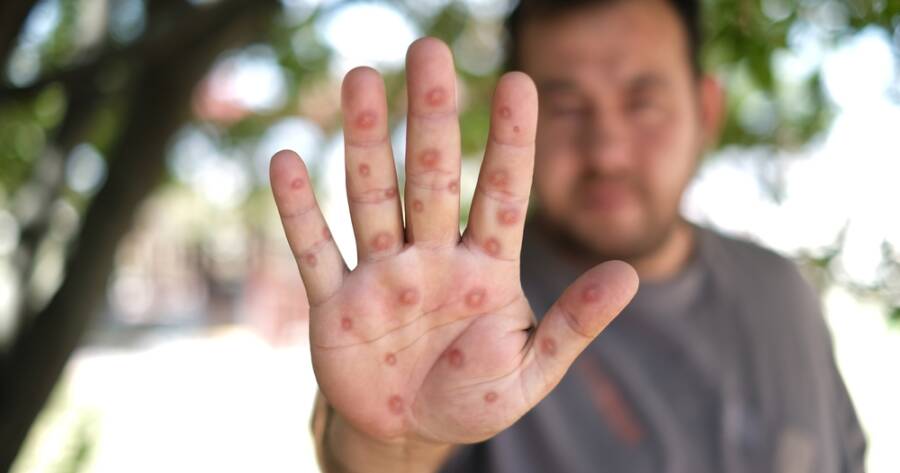The emergence of MPox, formerly known as monkeypox, has caught global attention. This rare viral disease shares similarities with smallpox but is less severe. The virus has raised concerns due to its potential to spread through human-to-human contact. While outbreaks are uncommon, understanding MPox is essential for prevention and awareness. Staying informed about its symptoms and transmission can help minimize risks and promote early detection.
What Is MPox?
MPox is a zoonotic virus, meaning it spreads from animals to humans.1 The virus transmits through direct contact with infected animals, humans, or contaminated surfaces. Symptoms often include fever, rash, swollen lymph nodes, and muscle aches. In most cases, MPox resolves on its own, but severe cases can occur, especially in individuals with weakened immune systems.
MPox vs. Smallpox: What’s the Difference?
Though MPox and smallpox share similar symptoms like fever and rash, the two viruses differ in severity and spread.2 Smallpox was far more deadly and had a higher transmission rate before its eradication. MPox, while concerning, tends to cause milder illness in most cases. However, its zoonotic origin and potential for severe complications make it a disease that still warrants close monitoring. Differentiating between the two helps in crafting the right response strategies for outbreaks.
Is MPox the New COVID-19?
While MPox has garnered global attention, it isn’t the new COVID-19.3 One of the differences lies in our knowledge; unlike the early days of the COVID-19 pandemic, scientists have known about MPox for decades. We understand how it spreads, the symptoms it causes, and how to manage outbreaks effectively. While it’s important to take MPox seriously, the panic seen on social media should be tempered by the fact that MPox is far less contagious and generally less severe than COVID-19. Vigilance, not hysteria, is the appropriate response.
What You Should Know About Current MPox Outbreaks
You may have seen articles about ongoing MPox outbreaks in parts of Africa.4 Reports suggest strains spreading in these regions may be more deadly than the variant that got global attention two years ago. However, the situation is complex, with multiple epidemics happening simultaneously. Each epidemic involves a different virus variant. This evolving situation highlights the need for more research to fully understand the various transmission dynamics and the severity of each strain, making it clear the global fight against MPox is far from over.
How Does MPox Spread?
Human-to-human transmission occurs primarily through direct skin contact. This can happen when an infected person’s rash or bodily fluids come into contact with broken skin or mucous membranes. The virus can also spread via respiratory droplets during prolonged face-to-face interactions. Additionally, objects like bedding or clothing contaminated with MPox can transmit the virus. Despite these modes of transmission, MPox is not as contagious as some other viral diseases, such as the flu or COVID-19.
Signs and Symptoms of MPox
The early symptoms of MPox include fever, headache, muscle pain, and fatigue. A few days after these initial symptoms, a distinctive rash appears. The rash often starts on the face and spreads to other parts of the body, including the hands and feet. These lesions progress through stages, beginning as flat red spots before evolving into fluid-filled blisters that eventually scab over. While most individuals recover within two to four weeks, complications such as secondary infections or pneumonia can arise in severe cases.
Treatment and Prevention
Currently, there is no specific treatment for MPox. Supportive care helps relieve symptoms while the body fights off the infection. However, antiviral medications developed for smallpox may offer some benefit. Vaccination against smallpox has also been shown to provide cross-protection against MPox, though it is not routinely used. Prevention largely revolves around avoiding contact with potentially infected animals, practicing good hygiene, and isolating infected individuals to prevent further spread.
MPox and Public Health
While MPox outbreaks remain rare, global travel and trade have increased the potential for the virus to spread beyond endemic regions. Public health officials emphasize the importance of surveillance and rapid response to any new cases. Quarantine measures and vaccination of close contacts are standard protocols in affected areas. Public awareness campaigns play a crucial role in educating populations at risk, ensuring that communities know how to prevent infection and what to do in the event of an outbreak.
Protecting Yourself and Others From MPox
MPox is a rare but potentially serious disease that requires vigilance and education to control. Although most cases are mild, the potential for more severe outcomes underscores the need for continued public health efforts. Understanding MPox, its transmission, and preventive measures can help reduce the risk of outbreaks and protect vulnerable populations.
